Spring bird watching has arrived in North Bay and the trickle of birds arriving will soon turn to a flood by early to mid-May. Of the 500+ species of birds in Ontario, over 300 of them have been seen in North Bay.
Since North Bay has lakes on both its east and west boundaries many of the migrating birds are funnelled along the lake edges into the city. As a result, our parks and wooded bike paths have a wide variety of birds, especially during migration season. One of the best spots to see a large number of birds in a small area is Laurier Woods Conservation Area in the heart of the city.
Laurier Woods Conservation Area
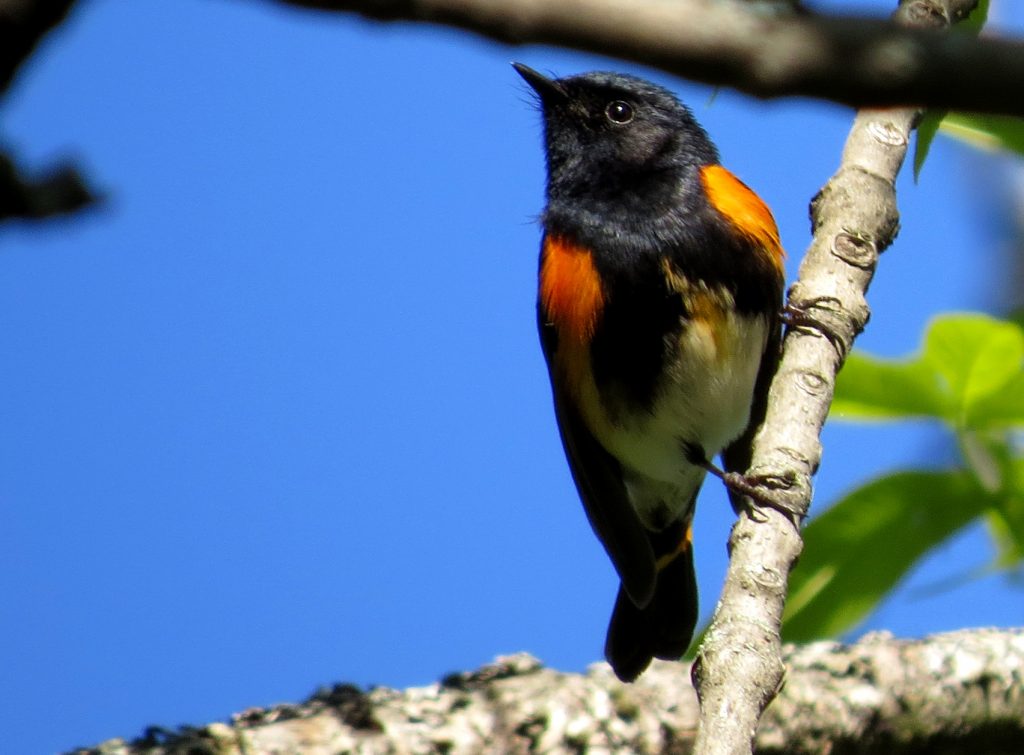
There are two entrance points into Laurier Woods Conservation Area: Laurier Avenue and Brule Avenue, with Brule having the larger parking lot.
Laurier Woods is the place to be for spring bird watching. It is connected to an extensive forest and wetland complex to the south. Birds moving northward through the complex arrive in Laurier Woods resulting in a large number of birds feeding and resting in a small area during their migration. There is a wide variety of habitats available for the birds here.
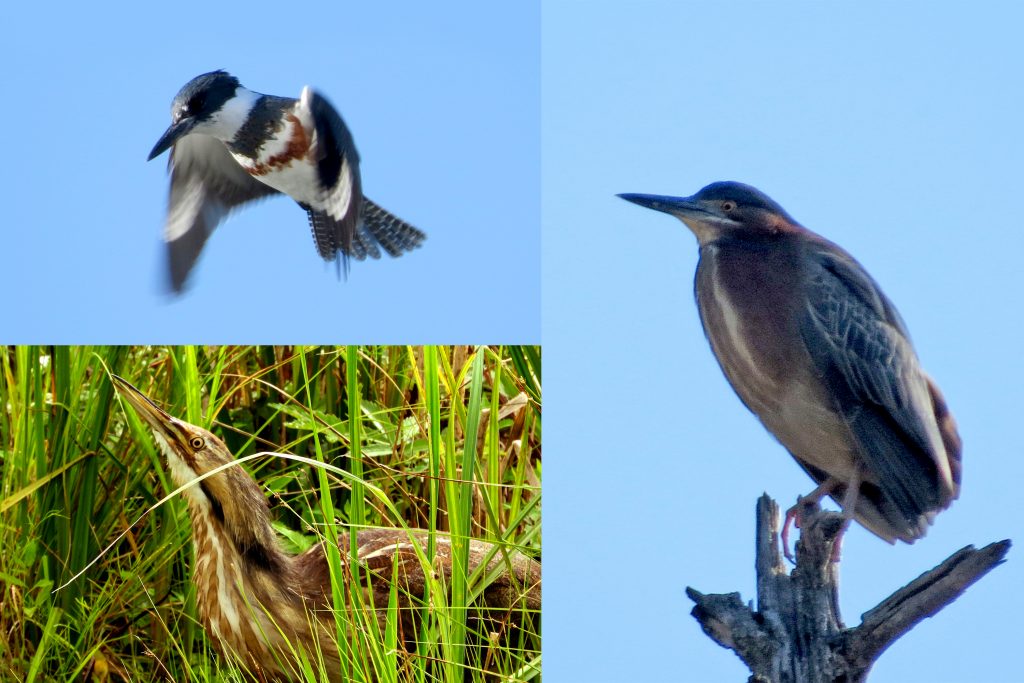
In the open marshes, Pied-billed Grebes call and nest; in the cattail marshes, Virginia Rails and Soras are heard late at night. During the day, Belted Kingfishers can be seen diving into the water for minnows; early morning walkers may see Green Herons perched on a snag, or an American Bittern stalking through the cattails. Swallows, including the endangered Barn Swallow, can also be seen flying over the ponds catching insects.
The tall shrubs and stunted deciduous trees along the marsh pathways provide eye-level views of Grey Catbirds, Brown Thrashers, and the beautiful Common Yellowthroat. Old beaver ponds often have Wood Ducks, Lesser Scaup, and Hooded and Common Mergansers along with more common species like Mallards and Canada Geese.
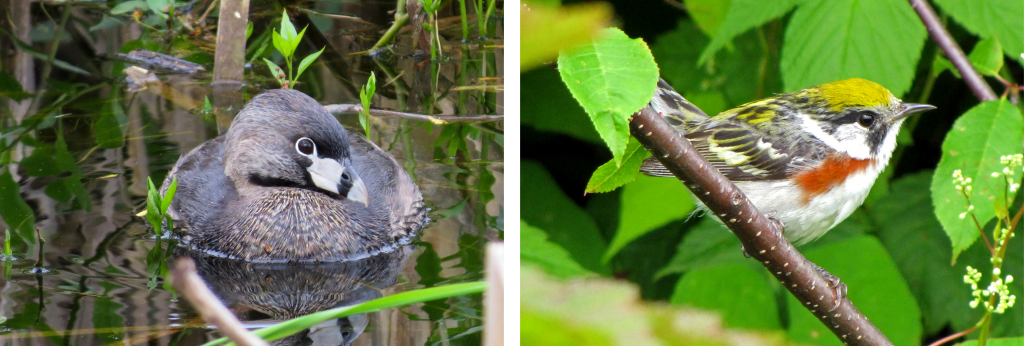
Laurier Woods also hosts 20-24 warbler species during migration with most of those species staying to breed. Transient species like Palm Warbler, Cape May Warbler, Bay-breasted Warbler, and Blackpoll Warbler are often found feeding with other birds as they move through the area on their way further north.
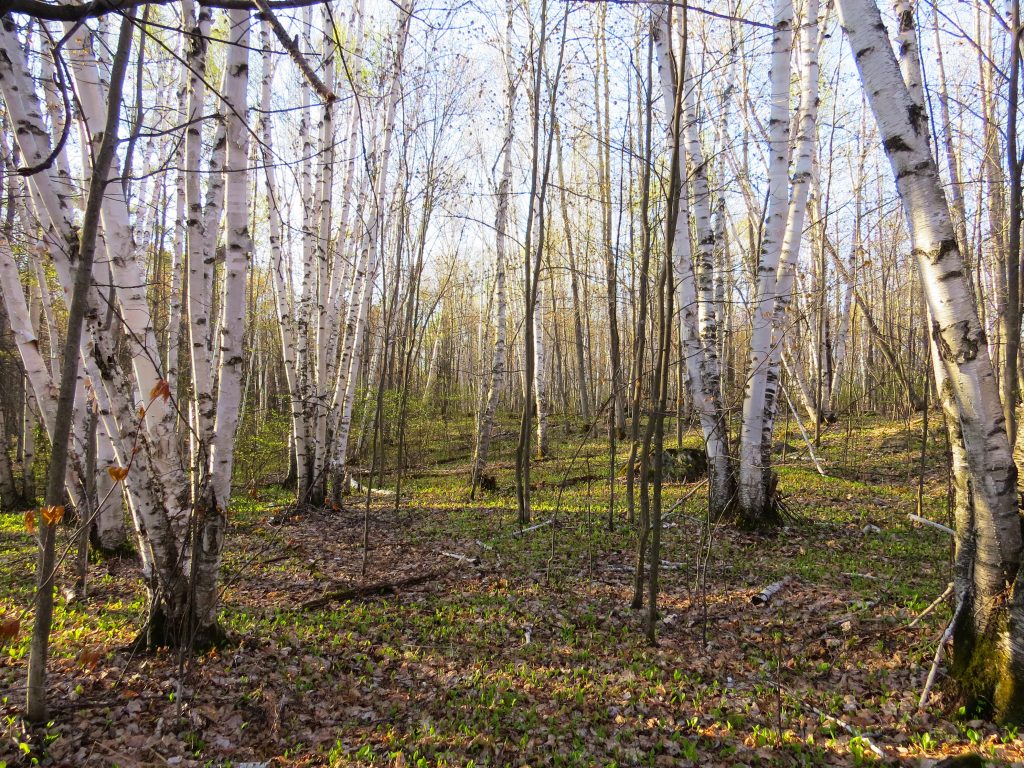
On the uplands surrounding the beaver ponds, mixed flocks of American Redstart, Chestnut-sided Warbler, Black-and-white Warbler, and Magnolia Warbler forage in the low shrubs and small trees. It isn’t unusual to look at one warbler through your binoculars and see several other bird species, including vireos and flycatchers, in the same field of view.
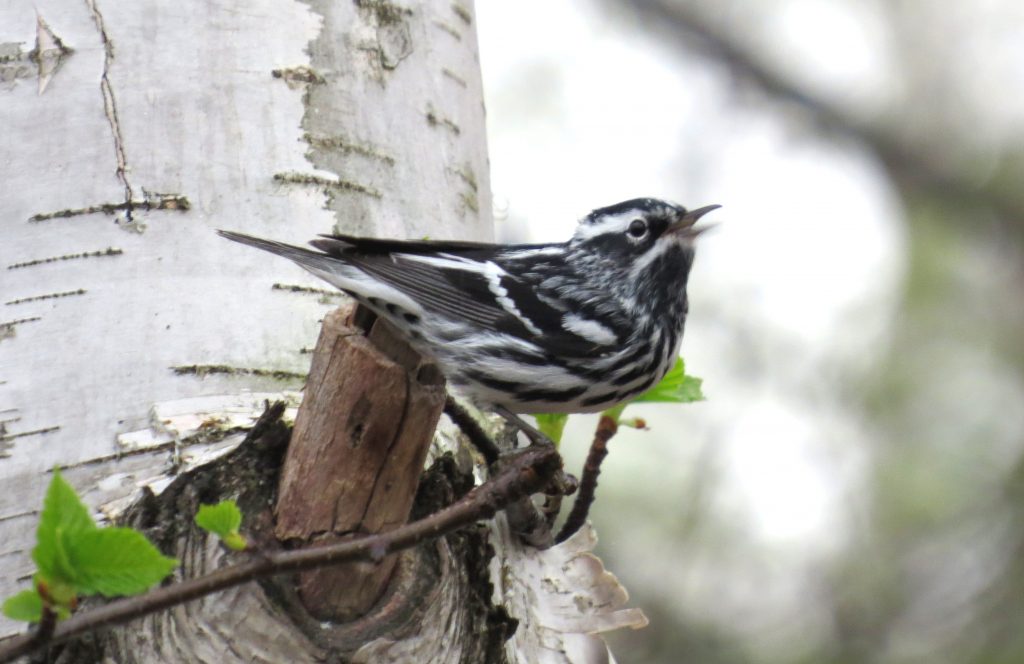
All habitats are easily accessible on well-maintained trails. Every Saturday in May, the Nipissing Naturalists Club usually has guided walks at 10 a.m. with at least one person in the group being able to identify birds by song to help find the more secretive species. This year COVID restrictions may cancel the group walks, but the trails will still be open.
Education Centre Trails
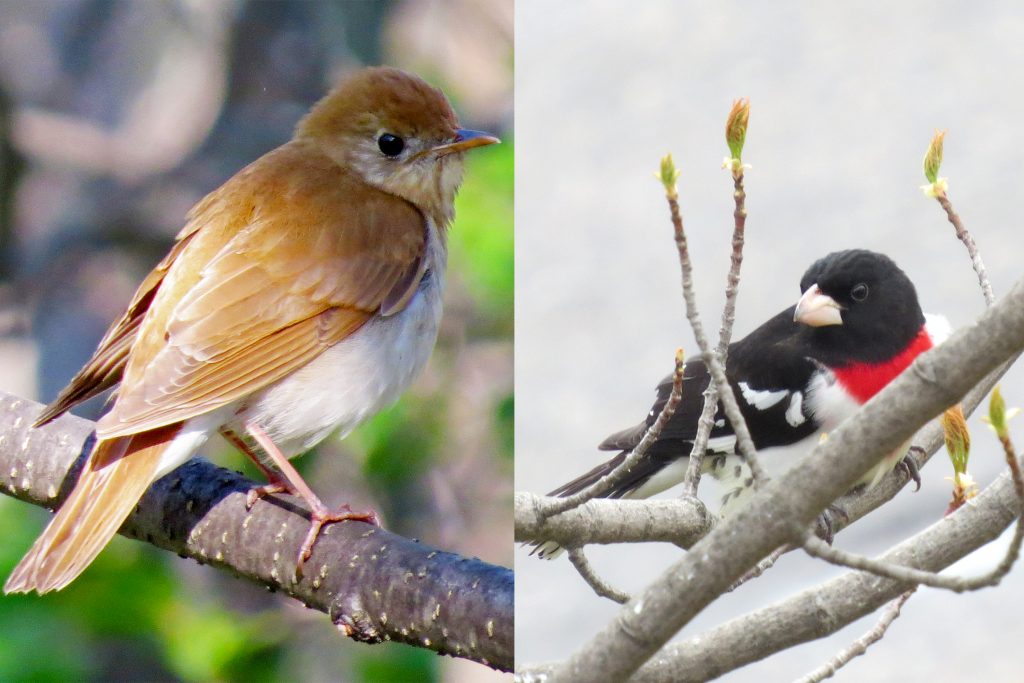
The escarpment Education Centre Trails can be accessed across the pond from the Nipissing University and Canadore College Education Complex, or from the Trans-Canada Highway entrance at Duchesnay Falls.
The escarpment forests are extensive, and the birds are not concentrated into one spot like they are in Laurier Woods. However, birds that favour older forest ecosystems can be found here. These include the Wood Thrush (an endangered species), the brilliant crimson and black-winged Scarlet Tanager, and the Rose-breasted Grosbeak. Their melodic songs can be heard from quite a distance. Other birds with songs that carry are Ovenbird, Veery, and Hermit Thrush; despite their muted earth-tone colours, they are readily seen with a bit of patience.
The mature forests also hold warbler species that favour deeper woods, such as the Black-throated Blue Warbler, Black-throated Green Warbler, and Canada Warbler (a species of concern). Orange-crowned Warbler, Northern Parula and Tennessee Warbler are less common but can be easily located when singing.
For the more adventurous, a night hike may turn up Great Horned Owls, Northern Saw-whet Owls, and Barred Owls, especially in early spring. This is bear country so practice bear safety.
Cranberry Trail
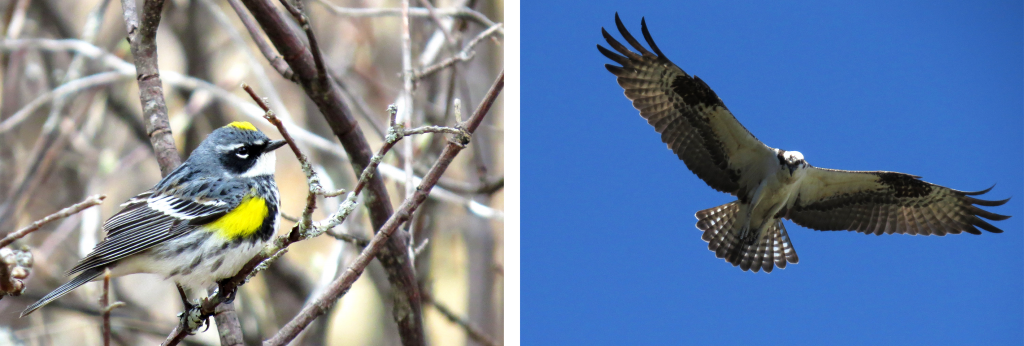
Cranberry Trail is a 2.5 km one-way trail that ends at a rocky point overlooking Lake Nipissing. The trail can be accessed by driving to the trailhead in Callander, or if time permits, by cycling the 12-km Kate Pace Way from North Bay to the dirt road that leads to the trailhead. Cranberry Trail does run through wet habitats such as vegetated ponds, red maple and black ash forests, and alder, snowberry and chokeberry shrub habitats, so bring insect repellent and appropriate clothing.
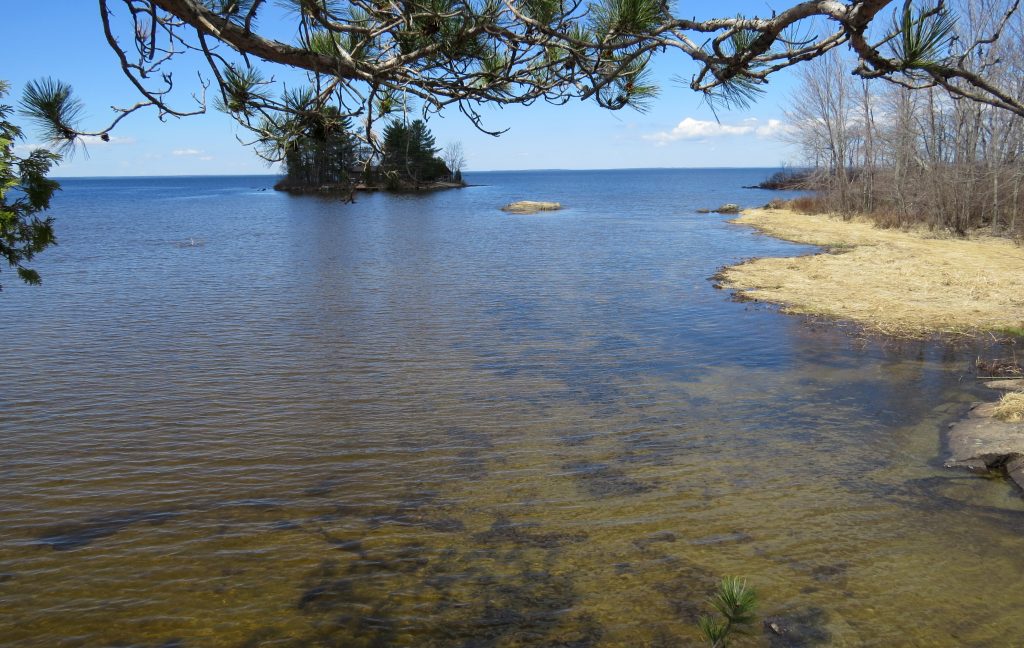
There are benches and interpretive signs as well as a two-story observation platform overlooking a large marsh. Trumpeter Swans, Northern Harriers, Ospreys, and Bald Eagles may be seen from the viewing platform.
Northern Waterthrush and Wilson’s Warbler are commonly heard in wetter sections, while Great Crested Flycatchers and Yellow-bellied Sapsuckers are usually seen and heard in the small sections of dry upland forest.
Sunset Park
There aren’t that many species to find here compared to the other sites. However, the park juts out into Lake Nipissing and is a good place to use a spotting scope during spring and fall migration to look for Red-necked, Eared, and Horned Grebes. Juvenile scoter species may also be spotted on the lake. For a few days, migrating longspurs and shorebirds will feed in the park area before resuming their journey to the Arctic.
Spring bird watching in the bay is a great start to the season
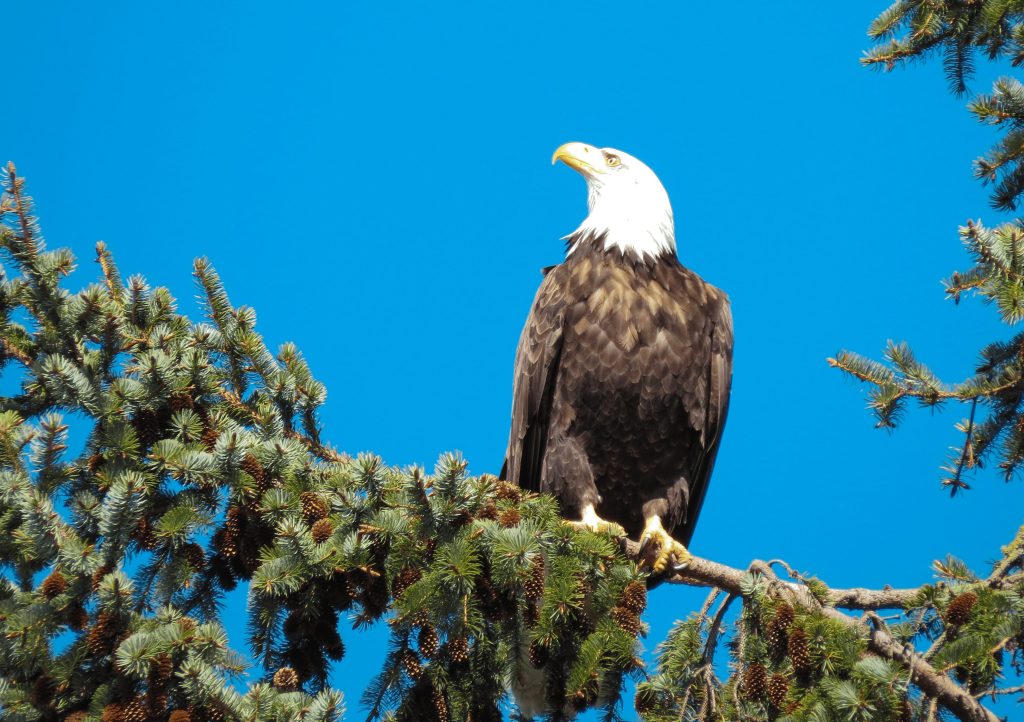
There are numerous other spots in and around North Bay for spring bird watching (e.g., Cache Bay, Jocko Point), and one of the bonuses to birding the area is that you’ll also have a chance to experience beautiful views, cool forests, sandy beaches, and plenty of places to sit on benches and just absorb the sights and sounds.

